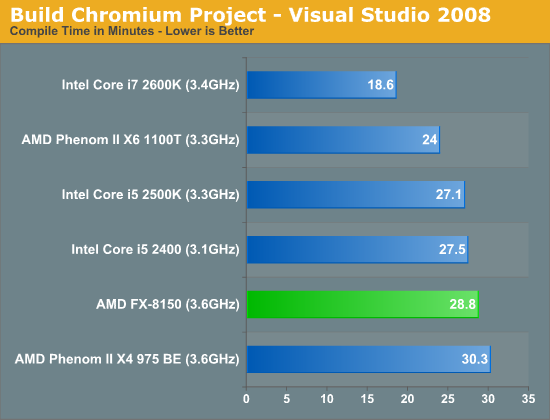- Joined
- Oct 10, 2009
- Messages
- 868 (0.15/day)
- Location
- London, UK
| System Name | The one under the desk / Media Centre |
|---|---|
| Processor | Xeon X3730@3.6GHZ / Phenom II X4 805E |
| Motherboard | Gigabyte P55M-UD4 / Asus Crosshair III |
| Cooling | Corsair H70 + 2*PWM fan / Arctic Alpine 11 |
| Memory | 16GB DRR3-1333 9-9-9-27 / 4GB Crucial DDR3-1333 |
| Video Card(s) | Asus DirectCU GTX 680 / Gigabyte 560TI |
| Storage | Kingston V200 128GB, WD6400AAKS, 1TB Seagate 7.2kRPM SSHD / Kingston V200 128GB |
| Display(s) | Samsung 2343BW + Dell Ultrasharp 1600*1200 / 32" TV |
| Case | C'M' Silencio 550 / Some ancient SilverStone brushed aluminium media centre |
| Audio Device(s) | No. |
| Power Supply | Thermaltake Toughpower XT 675W / EVGA 430W |
| Mouse | Mionix Naos 3200 / Generic PS2 |
| Keyboard | Roccat Ryos TKL Pro / Evoluent Mouse Friendly Keyboard (Logitech OEM) |
| Software | Windows 7 Ult x64 |
| Benchmark Scores | Nah. |
You have input the Intel CPU has a longer pipeline and wins most of the time... pushing it even more towards 2x
Either a CPU gives performance results 2x faster, or it doesn't. Contrary to your earlier suggestion, in the examples that you give, it doesn't.
Most applications don't care about ISAs but most benchmarks do
In most cases in the native environment some of these applications won't exist
(x87, MMX, 3dnow!, SSE(64bit) can't exist in x86-64, in x86-64 you have to use SSE2,SSE3,SSE4,SSE5(AVX+FMA+AVX2+Gather+XOP)
In most music conversion you see MMX and SSE being most used...while in 64bit applications of music conversions you see SSE4 being used the 64bit music converter is faster than the 32bit music converter but the 32bit version is still being more used...
Consumers = Relatively Stupid....in these cases
Smart Consumers like myself know to wait for applications to use the new ISAs before jumping boat or listening to non-important reviewers trying to persuade unsmart consumers in making dumb decisions
Most of the most demanding programs I use (and will use I would think for at least another few years) are represented (by themselves or very similar programs) in that table.


